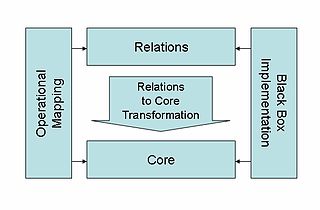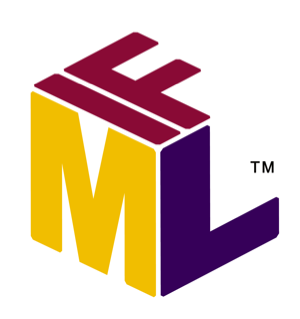
The Unified Modeling Language (UML) is a general-purpose, developmental, modeling language in the field of software engineering that is intended to provide a standard way to visualize the design of a system.
The XML Metadata Interchange (XMI) is an Object Management Group (OMG) standard for exchanging metadata information via Extensible Markup Language (XML).

The Meta-Object Facility (MOF) is an Object Management Group (OMG) standard for model-driven engineering. Its purpose is to provide a type system for entities in the CORBA architecture and a set of interfaces through which those types can be created and manipulated. The official reference page may be found at OMG's website.

Eclipse is an integrated development environment (IDE) used in computer programming. It contains a base workspace and an extensible plug-in system for customizing the environment. It is the second-most-popular IDE for Java development, and, until 2016, was the most popular. Eclipse is written mostly in Java and its primary use is for developing Java applications, but it may also be used to develop applications in other programming languages via plug-ins, including Ada, ABAP, C, C++, C#, Clojure, COBOL, D, Erlang, Fortran, Groovy, Haskell, JavaScript, Julia, Lasso, Lua, NATURAL, Perl, PHP, Prolog, Python, R, Ruby, Rust, Scala, and Scheme. It can also be used to develop documents with LaTeX and packages for the software Mathematica. Development environments include the Eclipse Java development tools (JDT) for Java and Scala, Eclipse CDT for C/C++, and Eclipse PDT for PHP, among others.
Model Driven Architecture (MDA) is a software design approach for the development of software systems. It provides a set of guidelines for the structuring of specifications, which are expressed as models. Model Driven Architecture is a kind of domain engineering, and supports model-driven engineering of software systems. It was launched by the Object Management Group (OMG) in 2001.
Domain-specific modeling (DSM) is a software engineering methodology for designing and developing systems, such as computer software. It involves systematic use of a domain-specific language to represent the various facets of a system.
Model-driven engineering (MDE) is a software development methodology that focuses on creating and exploiting domain models, which are conceptual models of all the topics related to a specific problem. Hence, it highlights and aims at abstract representations of the knowledge and activities that govern a particular application domain, rather than the computing concepts.

QVT (Query/View/Transformation) is a standard set of languages for model transformation defined by the Object Management Group.
The Graphical Modeling Framework (GMF) is a framework within the Eclipse platform. It provides a generative component and runtime infrastructure for developing graphical editors based on the Eclipse Modeling Framework (EMF) and Graphical Editing Framework (GEF). The project aims to provide these components, in addition to exemplary tools for select domain models which illustrate its capabilities.

Eclipse Modeling Framework (EMF) is an Eclipse-based modeling framework and code generation facility for building tools and other applications based on a structured data model.
Generic Eclipse Modeling System (GEMS) is a configurable toolkit for creating domain-specific modeling and program synthesis environments for Eclipse. The project aims to bridge the gap between the communities experienced with visual metamodeling tools like those built around the Eclipse modeling technologies, such as the Eclipse Modeling Framework (EMF) and Graphical Modeling Framework (GMF). GEMS helps developers rapidly create a graphical modeling tool from a visual language description or metamodel without any coding in third-generation languages. Graphical modeling tools created with GEMS automatically support complex capabilities, such as remote updating and querying, template creation, styling with Cascading Style Sheets (CSS), and model linking.
Rational Software Architect is a modeling and development environment that uses the Unified Modeling Language (UML) for designing architecture for C++ and Java EE (JEE) applications and web services. Rational Software Architect is built on the Eclipse open-source software framework and includes capabilities focused on architectural code analysis, C++, and model-driven development (MDD) with the UML for creating applications and web services.
Xtext is an open-source software framework for developing programming languages and domain-specific languages (DSLs). Unlike standard parser generators, Xtext generates not only a parser, but also a class model for the abstract syntax tree, as well as providing a fully featured, customizable Eclipse-based IDE.

YAKINDU Statechart Tools is a tool for the specification and development of reactive, event-driven systems with the help of finite-state machines. It comprises a tool for the graphical editing of statecharts and provides validation, simulation, and source code generators for various target platforms and programming languages. YAKINDU Statechart Tools are available with standard and professional editions, with no-cost licenses for non-commercial resp. academic usage. Users are coming from both industry and academia.

The Interaction Flow Modeling Language (IFML) is a standardized modeling language in the field of software engineering. IFML includes a set of graphic notations to create visual models of user interactions and front-end behavior in software systems.
UML Designer is an open-source UML tool based on Sirius and Eclipse. The project is licensed under the EPL.














